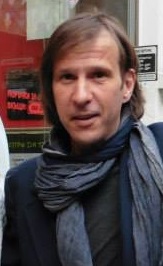
© 2017 Georgi Shtarbev.
All rights reserved.
Georgi Shtarbev
1972 Born in Plovdiv, Bulgaria
1997 Member of the Society of Plovdiv Artists
2000 Studied Painting at the National Academy of Fine Arts (Accademie di Belle Arti)
between 2000-2004 in Rome, Italy in the class of Prof. Delli Santi Francesco
2007 Member of the Union of Bulgarian Artists
Lives and works in Plovdiv and Sofia, Bulgaria
Awards:
2007 Award for painting of the Society of Plovdiv Artists
and the Municipality Plovdiv, Bulgaria
Georgi Shtarbev be longs to the generation of artists who had the heavy lot of starting their artistic quest in the chaos of the early 90s. His paintings had personal evolution that includes many transformations over the years but the distinct interest in the transitional forms between abstract and figural is evident. This extensive plastic problem takes a central place in his works especially after his academic education in the National Academy of Fine Arts, Rome, 2000 – 2004.
The paintings of Georgi Shtarbev are easily recognizable with their rich artistic texture, achieved through various techniques such impasto, scratching, rubbing, all of which are typically use for plastic structuring of the canvas surface. This artistic approach aims to underline the materiality of the work, to suggest the sensation that the process of its creation is present in its final completeness. At the same time, the accent on the complex textural surface bears both visual and purely tactile sensation through which the canvas is perceived not only as an abstract flat surface but also as a meaningful component of the painting. Each element of his works – the structural solution; the complex texture; the monochromic or the distinctive “colorful” coloration; the materiality of the artistic texture – has an individual, powerful expressiveness. That is the one of the reasons why the paintings of Georgi Shtarbev have this peculiar monumental impact, emphasized also by the idea of plurality and rhythm, evident in each canvas, related to the wholeness of the exposition. The colorful harmonies in his paintings are usually executed in warm, organic, earthy tonality and are sometimes emphasized in a separate area through dissonance compositions.